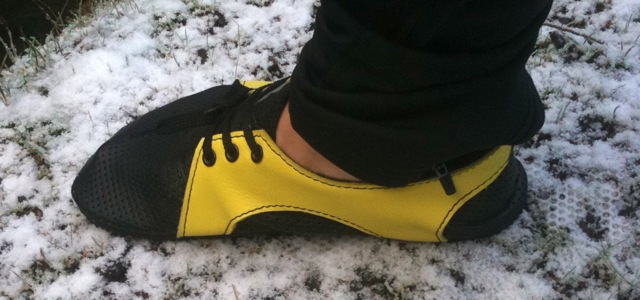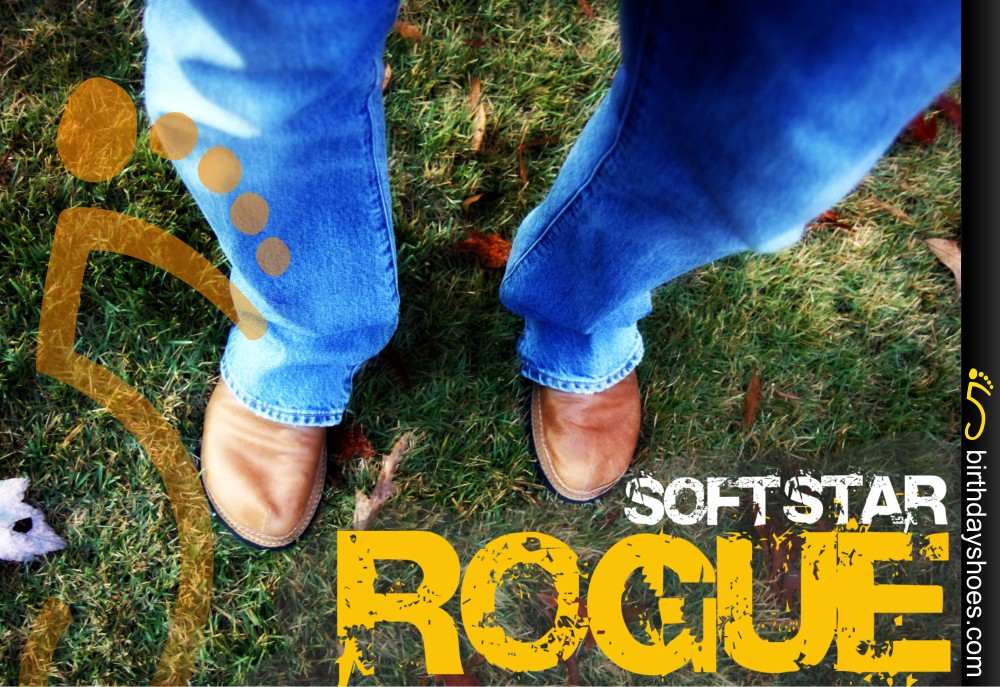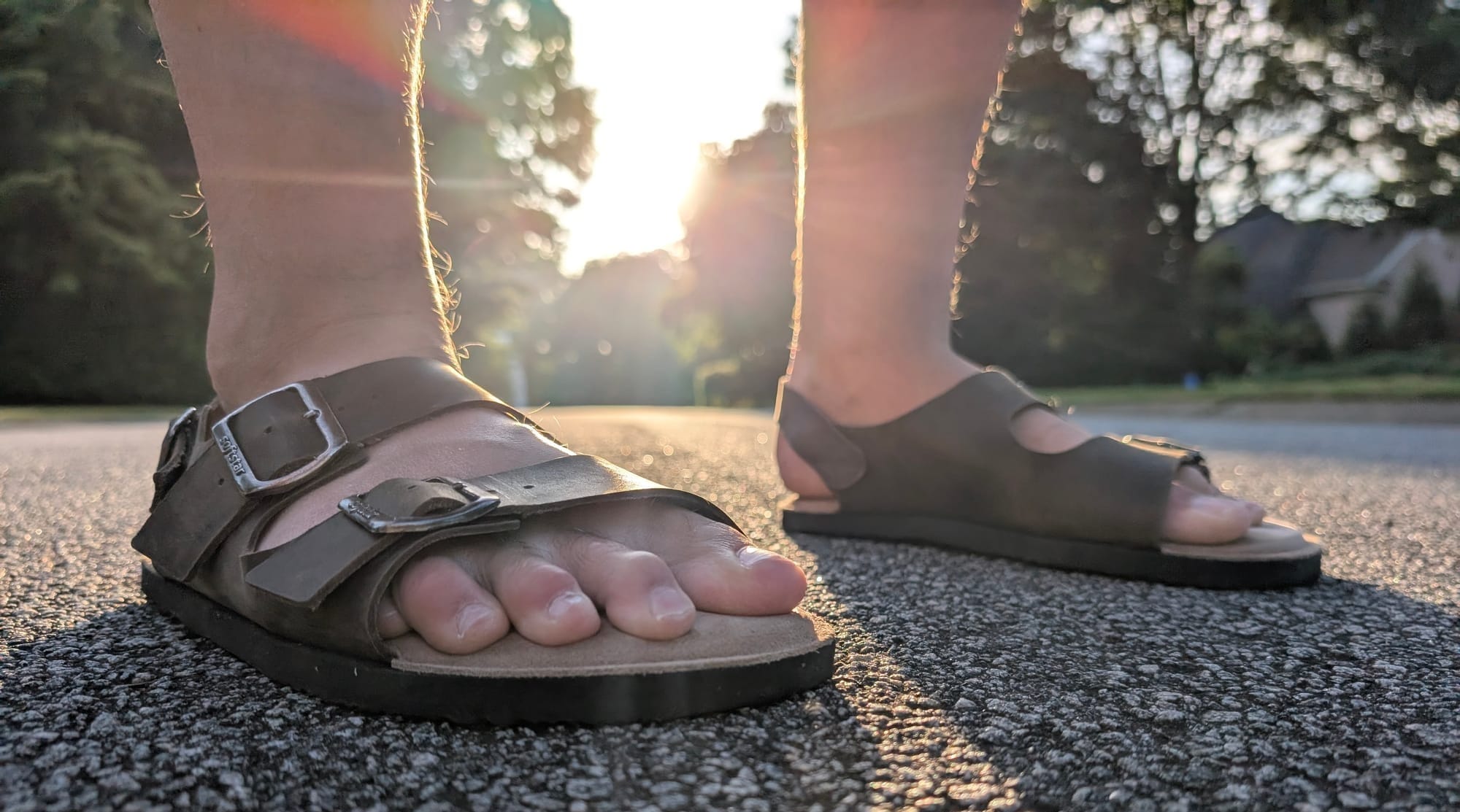A Man Can Outrun a Horse in a Race
I suck at distance running. I won’t say I don’t enjoy it. I do. Running along single tracks through the hilly forests and open fields that surround my Oregon community is pleasurable. (For about a half-hour, especially.) But everything is relative. I…

Part 1 of My First Half-Marathon (Read Part 2: A Man Can Outrun a Horse in a Race | Read Part 3: Running my First Half Marathon)
I suck at distance running.
I won’t say I don’t enjoy it. I do. Running along single tracks through the hilly forests and open fields that surround my Oregon community is pleasurable. (For about a half-hour, especially.) But everything is relative. I mean, when my mountain bike is in good working condition, for example, I could take that on the same trail, with a bit more pleasure for everything over a half-hour. If I have a conflict between a trail run and a pick-up basketball game? Unless the weather is heartbreakingly beautiful, I’m going to ball up.
So why am I planning to run a half marathon?
A half marathon is hundreds of steps longer than I would normally consider a pleasant run. It—at least this one—is also all on streets and paved bike paths. Not a patch of dirt or a single stream crossing. Boo!
Contempt for horses, that’s why.
One of the many pompous looks given me by Larkin’s horse, Snowy Ridge
Lots of people in the minimalist footwear population have, of course, read Born to Run. Like any interesting book, it means different things to different people. Some people like the logic of linking evolutionary biology to our physical activities. Some people like the pseudo-Hunter S. Thompson gonzo journalism with its cast of iconoclastic and counter-cultural characters. Some people like any reason to dump on a big corporation like Nike.
What struck me in Born to Run? A man beat a horse in a fair race. That’s worth saying again: A man outraced a horse. I did not know such a thing was possible. Sure, I have seen the black and white footage of Jesse Owens racing against thoroughbreds, more recently repeated by NFL wide receiver Chad Ochocinco (watch here). But the leads given to the human makes the race ridiculous, and, really, an embarrassment to humanity. Any slow pathetic creature can beat a fast awesome creature with a big enough head start. Anyway, it sent me to Google, and it turned out that Chris McDougall was not a liar. To be fair, as far as I know all these horses are carrying riders, but still—the very idea that it would be even be a contest with a ridden horse was incredible to me.
No, not incredible. I knew it all the time. You see, I had routinely told my wife for years that I was faster than her thoroughbred.
Unless you’ve dated or, God help you, married a woman who rides horses it can be difficult to explain to other horse-free men how these women subtly compare you to their animals in unflattering ways. I remember standing near my wife, Larkin, while a stallion was kicking his stall and pinning his ears back at anyone trying to handle him. She looked wistfully into the distance across the pasture and said, “Stallions are so masculine.” And then her gaze fell on me, and for a moment I saw this glimmer in her eyes, but as she focused on my bipedal form her look changed to something like disinterest. Maybe scorn. I’m not ruling out scorn. I think she sighed. That kind of thing can lead to a contempt.
And so, when I would joke that I could ‘take’ her horse, the mellifluously named Snowy Ridge, she wouldn’t even laugh. Just roll her eyes. And I say I was joking—but secretly I knew in my heart of hearts (or maybe my quad of quads) that if I had a fair start I could take him down. There was just something . . . not well designed about horses compared to my human form. The way they snorted. The way they got hurt all the time. (That’s another fact about being with a horse lady—you get on a first name basis with a large animal veterinarian and the guy who shods them in steel shoes.) These things seemed to indicate some shortcomings in their running design.
(A quick aside on the guy who shoes horses, the farrier. It would seem to me that horses might benefit from the same argument applied to humans in Born to Run. The farrier is very much a podiatrist working with orthotics. He looks at the horse’s posture and changes the shape of the shoes to ‘correct’ the horse. One would think that millennia of horse evolution would have given them feet that didn’t need steel shoes now that they’re not pulling carts on cobblestones streets. Apparently, I'm not the only one who thinks this.)
Experience, unfortunately, showed that regardless of the time of day, day of the year, or Snowy Ridge’s diet that day—if he wasn’t hobbled he could torch me in a sprint. I would, always in a joking manner, do things like run beside him when my wife was trotting along a trail, and then she’d spur him into a gallop…and I could feel her rolling her eyes through the back of her rapidly receding helmet.
It was all very, very annoying. Horses. Pfui!
Because I was a sprinter, it never ever occurred to me to think of taking Snowy Ridge at ultramarathon distances—I mean why would it? Why would that occur to anyone? But not only did it occur to someone, people did it, and McDougall opened the door for me. He described for me the possibility that I always knew existed: I could run that cocky thoroughbred right down into the ground . . .
. . . if I could run for 50 plus miles. Sigh. Did I mention that I suck at distance running? My legs are best used for propelling me a couple hundred meters or launching for a rebound. And I like them that way. But there is new allure now to distance running . . . (And Oh! Now I can do it since I don’t crucify my ankles in my old over-padded running shoes.) I find going further and further is easier and easier . . . to the point where now getting enough time to run is as important as being able to do it.

Runamoc from Soft Star Shoes.
So this half marathon—a little bit of a homage to my evolutionary design, running in these hornet-colored mocassins. And a healthy dose of payback for the all the snide little snorts and cocky looks I’ve endured from Equus ferus caballus.
Part 1 of My First Half-Marathon (Read Part 2: A Man Can Outrun a Horse in a Race | Read Part 3: Running my First Half Marathon)
Note from Justin — the following is one in a series of posts from Jay Holavarri, who happens to be married to one of the Chief Elves at Soft Star Shoes. Jay is going to be writing a series of posts about training for a half marathon, culminating in a write-up of his race! Jay will, of course, be running the race in his minimalist footwear of choice — Soft Star Shoes. Join me in welcoming him to BirthdayShoes!




